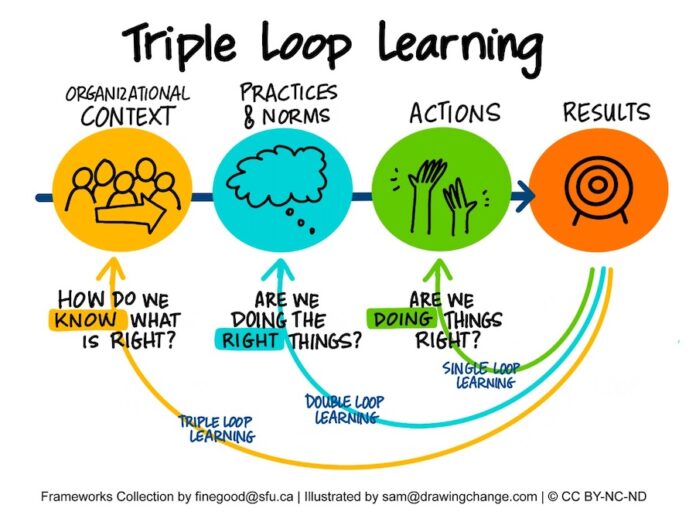In my final publish on adapting to chaos I requested — what modifications in our sensemaking practices ought to we incorporate to adapt to a world that’s usually extra chaotic than advanced? I obtained 12 feedback right here and one other ten feedback on LinkedIn. Confusion was one theme commented upon and Chris Corrigan referenced a wonderful publish on that subject — escaping confusion.
Within the area of Confusion the primary and most essential motion, I consider, is an consciousness that you’re there. With out consciousness you might be misplaced. Any motion that you simply undertake from that place is prone to be based mostly on conditioning with none sensitivity to your context and that may be extremely harmful. In actual fact if you happen to have a look at Dave’s central area map you will notice that Confusion is adjoining to the Clear, Sophisticated, and Chaotic domains. The division of the central area into Confusion and Aporia implies that you simply can’t get to Advanced from Confusion with out taking what Dave [Snowden] calls the Aporetic Flip.
Nollind Wachell, with whom I had many dialogue on Google+ a number of years in the past, commented that, “In impact, usually true progress and improvement doesn’t happen with out some type of ache and struggling as a result of it’s wanted to wake an individual up, sluggish them down, and assist them understand and see issues that they have been blind to earlier than. One thing that I feel must occur (ie an awakening) in not simply America however in lots of locations world wide, Canada included.” Maybe we want the shock of confusion with the intention to transfer towards Aporia after which get up. Nollind additionally steered a 2007 MPRA paper, Triple-Loop Studying as Basis for Profound Change, Particular person Cultivation, and Radical Innovation.

Michele Martin, one other previous good friend, joined us and commented that, “A lot of our focus is on mental sensemaking, however what individuals are really experiencing is visceral — disorientation, exhaustion, and the sensation that the bottom is shifting beneath their toes.”
And sensemaking in chaotic instances isn’t nearly pondering in another way. It’s about transferring in another way—studying the right way to orient when the bottom retains shifting, the right way to preserve going when there’s no clear map, and the right way to maintain confusion with out collapsing into worry or false certainty. I’ve begun calling this course of Wayfinding—the observe of studying the right way to transfer by way of uncertainty when ensures are gone and steady floor is nowhere to be discovered. Wayfinding isn’t about fixing chaos or forcing readability; it’s about growing a brand new relationship with the unknown. The query isn’t simply ‘how can we make sense of this?’ however ‘how can we stay inside it?”
I like the concept of wayfinding as a substitute of sensemaking. It jogs my memory that in unexplored territory a compass is extra essential than a map. I feel we’ll all should get used to a way of disorientation in the meanwhile. Shaun Coffey, one other good good friend, really useful this e-book: Wayfinding Management: Groundbreaking Knowledge for Creating Leaders.
We information you on a management improvement journey that requires getting into the unknown, growing sharper powers of remark, being extra snug with uncertainty and discovering new and higher methods to deal with conditions, relying not solely on rational pondering, but additionally on the a lot broader units of intelligence with which every of us is endowed. A means finder chief is motivated by curiosity and is steeped in marvel. Wayfinder leaders look to develop everybody’s potential and have an abiding perception that ‘we’re within the waka collectively’.
Later within the dialogue I referred to this poem that I usually share on the finish of my PKM workshops.
He’s fast, pondering in clear photos;
I’m sluggish, pondering in damaged photos.
He turns into uninteresting, trusting to his clear photos;
I turn out to be sharp, mistrusting my damaged photos.
Trusting his photos, he assumes their relevance;
Mistrusting my photos, I query their relevance.
Assuming their relevance, he assumes the very fact;
Questioning their relevance, I query the very fact.
When the very fact fails him, he questions his senses;
When the very fact fails me, I approve my senses.
He continues fast and uninteresting in his clear photos;
I proceed sluggish and sharp in my damaged photos.
He in a brand new confusion of his understanding;
I in a brand new understanding of my confusion.
—Robert Graves (1885) In Damaged Photographs

